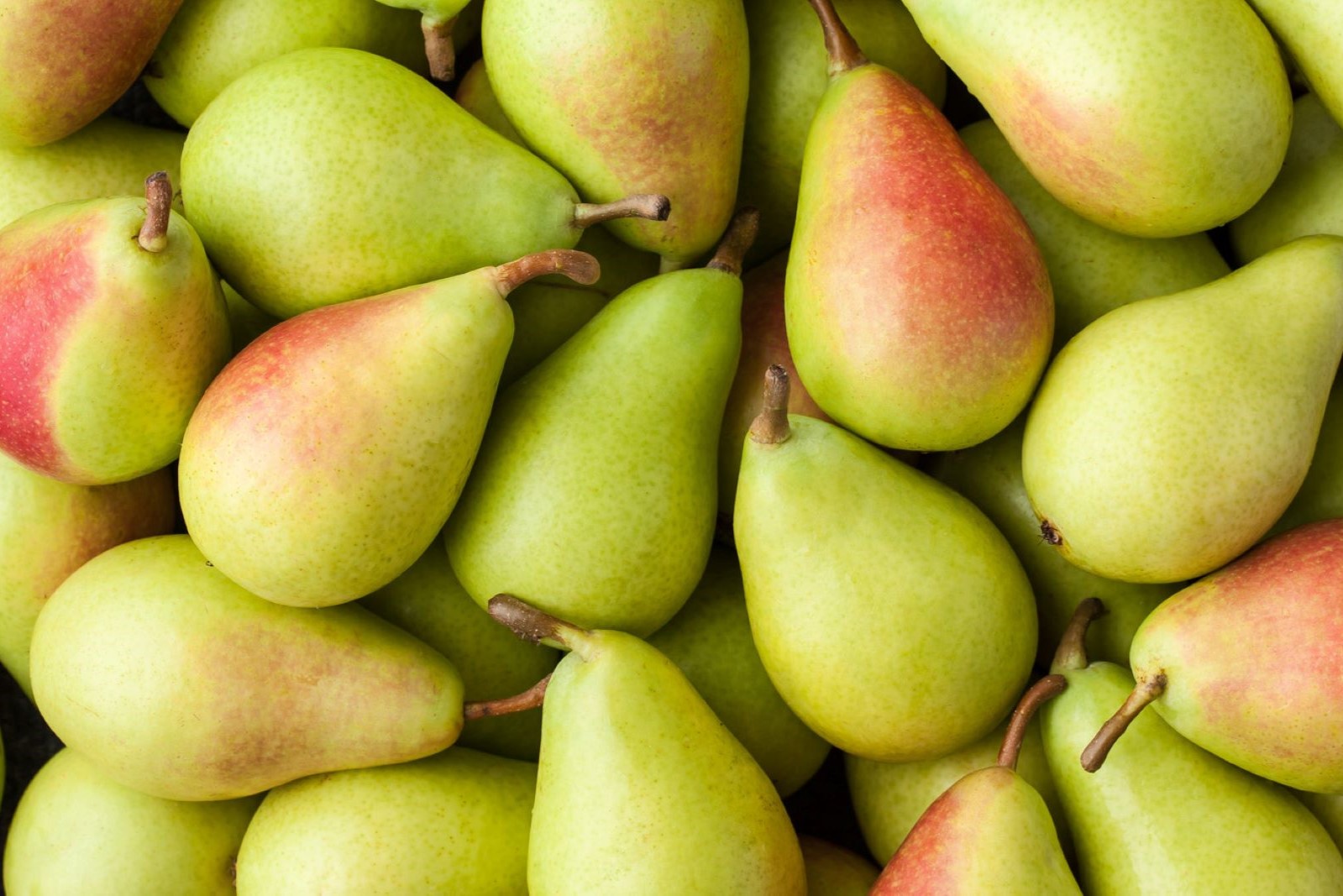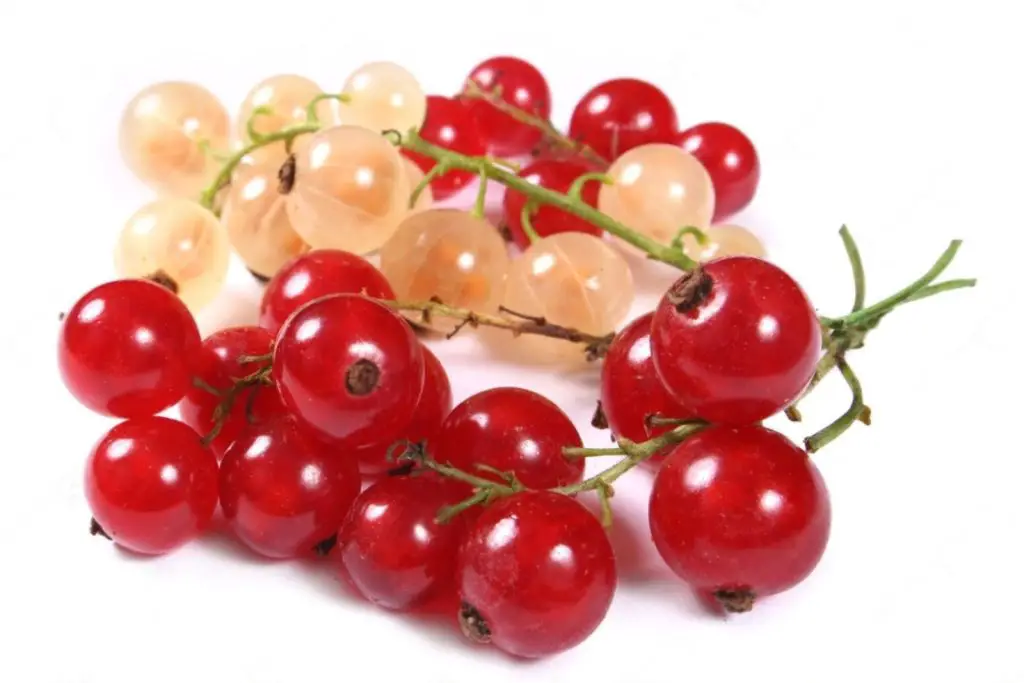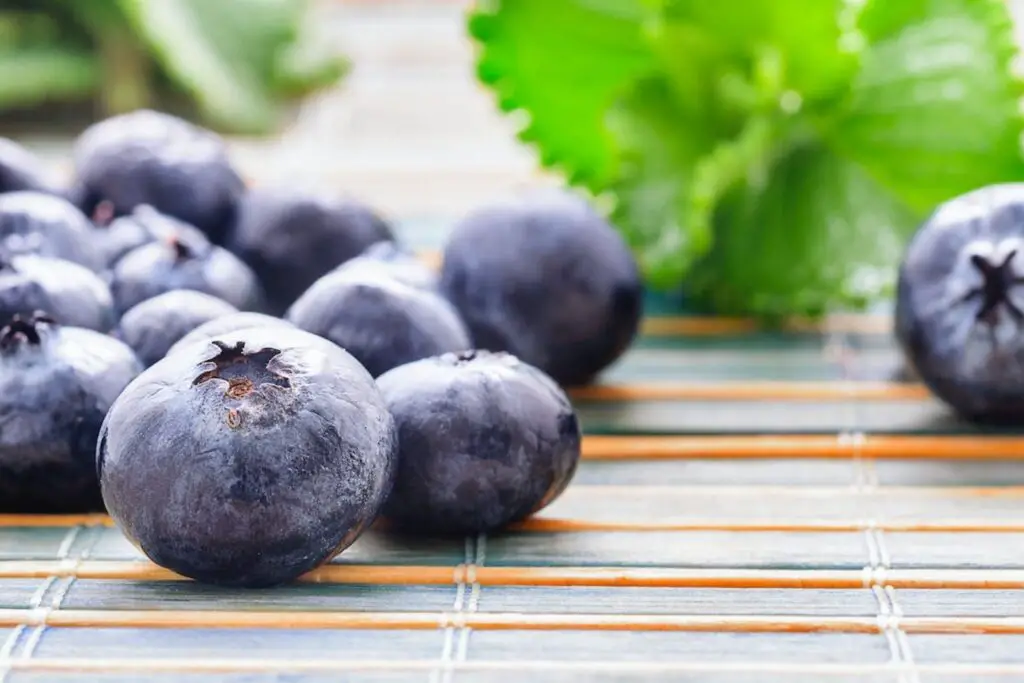
Pears, the succulent and juicy fruits with a distinct sweet and slightly grainy texture, are a delightful treat that signifies the arrival of the fall season. Whether enjoyed fresh as a quick and nutritious snack or used in various culinary delights such as salads, pies, and preserves, pears never fail to impress with their unique taste and versatility. However, as the season passes and the abundance of ripe pears overwhelms, freezing is a fantastic method to ensure you can relish the goodness of pears beyond their harvest time. By freezing pears at their peak ripeness, you can preserve their delectable flavor and essential nutrients, making them a convenient addition to your culinary endeavors even when they are not in season. In this guide, we will explore the steps for freezing pears, from preparing and slicing to suitable storage techniques, so you can savor their delightful taste all year long and enjoy the essence of fall in every dish you create. Join us on this journey to freezing pears and discover the secret to preserving the goodness of these luscious fruits, adding a touch of sweetness and elegance to your meals throughout the year.
Here are the simple steps to freeze pears:
- Step 1: Select Ripe and Firm Pears
- Step 2: Wash and Peel the Pears
- Step 3: Core and Slice the Pears
- Step 4: Treat with an Anti-Browning Solution (optional)
- Step 5: Arrange the Pear Slices for Freezing
- Step 6: Flash-Freeze the Pear Slices
- Step 7: Package and Seal the Frozen Pear Slices
- Step 8: Label and Date the Packages
- Step 9: Store in the Freezer
Step 1: Select Ripe and Firm Pears
Selecting the right pears is crucial when it comes to freezing them. Ripe and firm pears are ideal for freezing because they have reached their peak sweetness and flavor. When pears are too unripe, they can be quite hard and lack the desired sweetness, while overly ripe or mushy pears may not hold up well during the freezing process and could turn into a mushy mess upon thawing.
Look for pears that are free from any bruises, cuts, or blemishes on their skin. Damaged pears are more susceptible to spoilage and won’t freeze as well as their pristine counterparts. Check the stem end of the pears to ensure they are intact, as a broken stem can lead to faster deterioration.
Variety plays a significant role in the taste and texture of frozen pears. Some varieties are better suited for freezing due to their inherent qualities. Bartlett, Anjou, and Bosc pears are commonly recommended for freezing because they have a pleasant taste, firm texture, and are widely available. However, you can certainly experiment with other pear varieties if you have a personal preference or access to unique types of pears.
It’s essential to remember that the quality of the pears you select for freezing will directly impact the final results. Opting for ripe and firm pears of good quality ensures that you’ll end up with delicious, sweet, and well-textured frozen pears that you can enjoy throughout the year.
Step 2: Wash and Peel the Pears
Before freezing the pears, it’s essential to clean them thoroughly to remove any dirt, residue, or pesticides that may be present on the skin. Start by giving the pears a gentle rinse under cool running water. Use your hands to rub the surface of the pears gently to ensure all areas are cleaned.
After washing the pears, use a clean cloth or paper towel to pat them dry. Drying the pears helps remove excess moisture, which can lead to ice crystals during freezing and might affect the texture and taste of the pears when thawed.
The decision to peel the pears before freezing is a matter of personal preference and the intended use of the frozen fruit. While some recipes may call for peeled pears, leaving the skin intact can offer some advantages. The skin of pears contains valuable nutrients, including dietary fiber and antioxidants, which can contribute to a healthy diet. Additionally, the skin adds a subtle flavor that can enhance certain recipes.
Ultimately, whether you peel the pears or leave the skin on, it won’t affect the freezing process itself. The choice between peeled and unpeeled pears comes down to your personal taste preferences and the specific dishes you have in mind. By washing and optionally peeling the pears, you ensure that they are clean and ready for the next steps in the freezing process, maintaining the best possible quality when you decide to use them in your favorite recipes later on.
Step 3: Core and Slice the Pears
After washing and potentially peeling the pears, the next step in the freezing process is to prepare them for slicing. This involves coring the pears and removing the seeds to ensure a smooth and enjoyable eating experience when the frozen pears are later used in various dishes.
To core the pears, you have a couple of options. One method is to use a corer, a handy kitchen tool designed specifically for removing the core and seeds from fruits like pears and apples. Simply insert the corer into the top of the pear and press it down through the center, then pull it out to remove the core and seeds.
If you don’t have a corer, you can use a simple knife to achieve the same result. Cut the pear in half lengthwise, and then use the tip of the knife to carefully remove the core and seeds from each half. Alternatively, you can cut around the core in a circular motion, creating a hole in the center of the pear, and then use your fingers or a spoon to scoop out the core and seeds.
Once the pears are cored, it’s time to slice them to your preferred thickness. Some people prefer thicker slices, which are perfect for snacking or using in desserts like pies or tarts. Thicker slices can also hold up well in cooked dishes, where they might retain more of their shape and texture.
The choice of slice thickness is entirely up to you and depends on how you plan to use the frozen pears in your future recipes. Whichever option you choose, ensuring uniform slice thickness allows for consistent freezing and even thawing when it’s time to use the frozen pears, resulting in a well-balanced and flavorful addition to your culinary creations. By coring and slicing the pears, you’ve prepared them for the next steps in the freezing process, bringing you one step closer to preserving their delicious taste and versatility for months to come.
Step 4: Treat with an Anti-Browning Solution (optional)
When pears are sliced and their flesh is exposed to the air, they have a natural tendency to undergo enzymatic browning, a chemical reaction that causes the fruit’s surface to turn brown. While this browning doesn’t necessarily affect the taste or safety of the pears, it can impact their appearance and make them less visually appealing when used in certain dishes or presentations.
To counteract this browning process and maintain the pears’ attractive color, you have the option to treat them with an anti-browning solution. One common anti-browning solution is a mixture of water and lemon juice or ascorbic acid. Lemon juice contains citric acid, while ascorbic acid is a form of Vitamin C, and both of these substances can help inhibit the enzymatic browning reaction.
To apply the anti-browning solution, gently toss the sliced pears in the mixture for a couple of minutes, ensuring that all the slices are coated evenly. The acidity in the solution helps to slow down the enzymatic browning process by lowering the pH level on the surface of the fruit.
After treating the pears with the anti-browning solution, drain them thoroughly. This step is essential to prevent any excess liquid from affecting the texture of the pears during freezing. You can use a colander or simply pat the pear slices dry with a paper towel to remove the liquid.
It’s important to note that this step is optional. If you plan to use the frozen pears in recipes where their appearance doesn’t matter much, such as smoothies or sauces, you may choose to skip the anti-browning treatment. The browning won’t affect the taste or nutritional value of the pears in any way.
However, if you want the frozen pears to maintain their original, vibrant color and look appealing in dishes like fruit salads or desserts, the anti-browning treatment can be beneficial. By taking the time to apply the anti-browning solution, you can ensure that the frozen pears retain their visual appeal and contribute to visually stunning dishes even after months in the freezer.
Step 5: Arrange the Pear Slices for Freezing
After treating the pear slices with the optional anti-browning solution, it’s time to arrange them on a baking sheet in preparation for freezing. This step is crucial for ensuring that the pear slices freeze individually and don’t stick together, making it easier to store and use them later on.
Start by laying the treated pear slices in a single layer on a baking sheet. It’s essential to use a baking sheet with edges or sides to prevent the pear slices from sliding off during freezing. To prevent sticking, line the baking sheet with parchment paper or a silicone mat. The parchment paper or silicone mat creates a non-stick surface that allows the pear slices to be easily removed once they are frozen.
Ensure that the pear slices are not touching each other on the baking sheet. Leaving space between each slice is essential because it prevents them from freezing together in clumps. If the slices freeze together, they will be difficult to separate when you want to use only a portion of the frozen pears, and you might end up with a large, solid block of frozen fruit.
By arranging the pear slices in a single layer with sufficient spacing, you promote rapid and even freezing. This process is known as “flash freezing,” which helps maintain the individual integrity of each slice and preserves the pears’ texture and taste when they are eventually thawed for use in your favorite recipes.
Once the pear slices are properly arranged on the baking sheet, transfer the sheet to the freezer. Allow the slices to freeze completely, which usually takes about 2 to 3 hours. Once frozen, you can move on to the next step of packaging and storing the pear slices, ensuring they remain in optimal condition until you’re ready to enjoy their sweet, refreshing taste in various culinary creations.
Step 6: Flash-Freeze the Pear Slices
After arranging the treated pear slices on the baking sheet with adequate spacing, the next step is to flash-freeze them. Flash freezing is a technique that involves freezing the pear slices quickly and individually. This process is essential for preserving the quality of the pears and preventing them from sticking together in clumps, which would make it challenging to use only the desired amount of frozen slices in your recipes later on.
To flash-freeze the pear slices, simply place the baking sheet with the arranged slices in the freezer. It’s essential to use the coldest setting on your freezer to achieve rapid freezing. The colder the temperature, the quicker the slices will freeze, which helps retain the fruit’s texture and flavor more effectively.
Flash freezing works by rapidly lowering the temperature of the pear slices, forming smaller ice crystals within the fruit. Smaller ice crystals result in less damage to the cell structure of the pears, preserving their natural juiciness and taste.
The duration required for flash freezing the pear slices is typically around 2 to 3 hours. However, the freezing time may vary depending on your freezer’s temperature and the thickness of the slices. It’s a good idea to periodically check the slices to ensure they are completely frozen before proceeding to the next step.
Once the pear slices are thoroughly frozen, they can be removed from the baking sheet. At this stage, the slices should be firm and separate from each other, allowing you to handle them without sticking together. Transfer the individually frozen pear slices into airtight freezer-safe containers or resealable plastic bags for long-term storage.
By flash-freezing the pear slices, you ensure that they maintain their individuality and quality throughout the freezing process. This technique enables you to take out only the amount of frozen pears you need for your recipes, leaving the rest undisturbed in the freezer for future use. When you’re ready to incorporate the sweet, frozen pear slices into your dishes, they will retain their delicious taste and firm texture, providing a delightful burst of flavor and natural sweetness to your culinary creations.
Step 7: Package and Seal the Frozen Pear Slices
After the pear slices have been flash-frozen and are firm and fully frozen, it’s time to package and seal them for long-term storage in the freezer. Proper packaging is essential to protect the frozen pears from freezer burn, which can negatively affect their taste and texture over time.
To package the frozen pear slices, use airtight freezer-safe containers or resealable plastic bags. Freezer-safe containers are specifically designed to withstand low temperatures and prevent moisture and air from entering, while resealable plastic bags provide a convenient option for sealing and organizing the frozen fruit.
If you’re using freezer-safe containers, ensure they are clean and dry before adding the frozen pear slices. Arrange the slices in the containers, leaving some space at the top for potential expansion during freezing. If you’re using resealable plastic bags, you can place the slices directly into the bags.
To prevent freezer burn, it’s crucial to remove as much air as possible from the packaging before sealing. Air exposure can lead to the formation of ice crystals on the surface of the pears, which can negatively impact their texture and taste. For containers, press down gently on the fruit to release any trapped air and then close the lid tightly. For resealable bags, gently press out the excess air before sealing the bags securely.
After packaging and sealing the frozen pear slices, promptly return them to the freezer. Store the pears in a designated area where they won’t be subject to temperature fluctuations caused by frequent opening and closing of the freezer door.
Step 8: Label and Date the Packages
Labeling and dating the packages of frozen pear slices is a crucial step in the freezing process that helps you keep track of the contents and their storage duration in the freezer. Proper labeling ensures that you can easily identify the frozen pears and use them efficiently while maintaining their optimal quality.
To label the containers or resealable bags, use a waterproof marker or adhesive labels. Write down the contents of the package, which, in this case, would be “pear slices” or simply “pears.” Including the contents on the label prevents confusion if you have other frozen fruits or items stored in the freezer.
Next, write down the date of freezing on the label. This date indicates when the pears were initially frozen and provides essential information on their storage duration. Knowing the freezing date allows you to use the oldest pears first, ensuring that none of the frozen fruit goes to waste and that you rotate your stock effectively.
By using the oldest pears first, you can maintain the overall quality of the frozen pear slices. Over time, frozen fruits may experience some minor changes in texture and taste due to natural processes. While these changes are usually minimal and won’t affect the safety of the fruit, using the oldest pears first ensures that you enjoy them at their best.
Taking a moment to label and date the packages of frozen pear slices is a small but essential step in the freezing process. It helps you stay organized, reduce waste, and enjoy the best quality fruit in your recipes throughout the entire freezing period. With clear labels and accurate dates, you can confidently and conveniently incorporate the delicious frozen pears into your culinary creations, knowing they have been properly stored and preserved for your enjoyment.
Step 9: Store in the Freezer
After carefully labeling and dating the packages of frozen pear slices, the final step is to store them in the freezer. The freezer is a controlled environment with consistently low temperatures that slow down the deterioration process in foods, including fruits like pears. By storing the frozen pear slices properly, you can enjoy their delicious taste and texture for an extended period, typically up to 10 to 12 months.
Ensure that the freezer is set to the coldest temperature to maintain the quality of the frozen pears. Avoid frequent opening and closing of the freezer door, as this can cause temperature fluctuations that may impact the overall freezing and storage process.
Place the labeled packages in the freezer, making sure to organize them in a way that maximizes space and allows for easy retrieval. You can stack the containers or bags neatly to optimize the available freezer space.
Properly frozen pears will maintain their taste, texture, and nutritional value throughout the storage period. When you’re ready to use the frozen pear slices in your recipes, simply take out the desired amount and return the rest to the freezer promptly.
The versatility of frozen pears makes them a delightful addition to a wide range of dishes. They can be used in pies, tarts, muffins, crisps, cobblers, and various desserts, adding a burst of natural sweetness to your creations. Additionally, frozen pear slices can be enjoyed on their own as a refreshing and healthy frozen treat, making them a convenient snack option.
By storing them correctly in the freezer, you can savor the taste of fresh, sweet pears long after their usual growing season has passed. Enjoy the convenience and versatility of frozen pears in your favorite recipes, adding a touch of natural sweetness and flavor to your culinary creations throughout the year.
Other related questions
How do you defrost pears?
To defrost pears, transfer the frozen slices to a plate or container and place them in the refrigerator. Allow the pears to thaw slowly and gently, which helps preserve their texture and flavor. Avoid using heat or hot water for defrosting to prevent loss of quality.
Can you refreeze pears?
Refreezing pears is generally not recommended as it can impact their quality and safety. Once pears are thawed, their texture and taste may change due to the formation of ice crystals during the initial freezing and thawing process. Moreover, refreezing can increase the risk of foodborne illnesses as it allows bacteria to multiply. It is best to use thawed pears promptly or cook them before refreezing to maintain their quality and ensure food safety.
How do I know if the pears have gone bad after being frozen?
To determine if frozen pears have gone bad, examine their appearance, smell, and texture. Look for any signs of freezer burn, such as discolored or dried-out patches on the surface. A strong off-putting odor or sour smell may indicate spoilage. Additionally, if the texture appears mushy or excessively soft, the pears may have degraded in quality. When in doubt, it’s safer to discard the pears to avoid potential foodborne illnesses.
Can you freeze pears for making smoothies?
Yes, you can freeze pears for making smoothies. Before freezing, peel, core, and slice the pears to your desired size. Place the pear slices in a single layer on a baking sheet and freeze them before transferring to airtight containers or freezer bags. Frozen pears can be blended directly from the freezer into smoothies, providing a convenient and nutritious addition to your favorite smoothie recipes.
Can frozen pears be used in baking or desserts?
Yes, frozen pears can be used in baking or desserts. Thaw the frozen pears in the refrigerator before using them in recipes to preserve their texture. They work well in pies, tarts, cakes, and crisps, adding a delicious fruity flavor to various desserts.
Can I freeze pears in syrup or with added sugar?
Yes, you can freeze pears in syrup or with added sugar. To freeze pears in syrup, create a sugar syrup by dissolving sugar in water, and then pour it over the peeled and sliced pears before freezing. For freezing with added sugar, toss the pear slices in sugar before placing them in containers or freezer bags. The sugar helps retain the pears’ sweetness and prevents browning during freezing, preserving their quality for use in various dishes.
Can you freeze pears with different varieties using the same method?
Yes, you can freeze pears with different varieties using the same method. The process for freezing pears remains consistent regardless of the pear type. Peel, core, and slice the pears, then follow the standard freezing procedures such as blanching (if desired), cooling, and transferring to airtight containers or freezer bags. Freezing allows you to preserve the unique flavors and characteristics of various pear varieties for use in various culinary applications.








